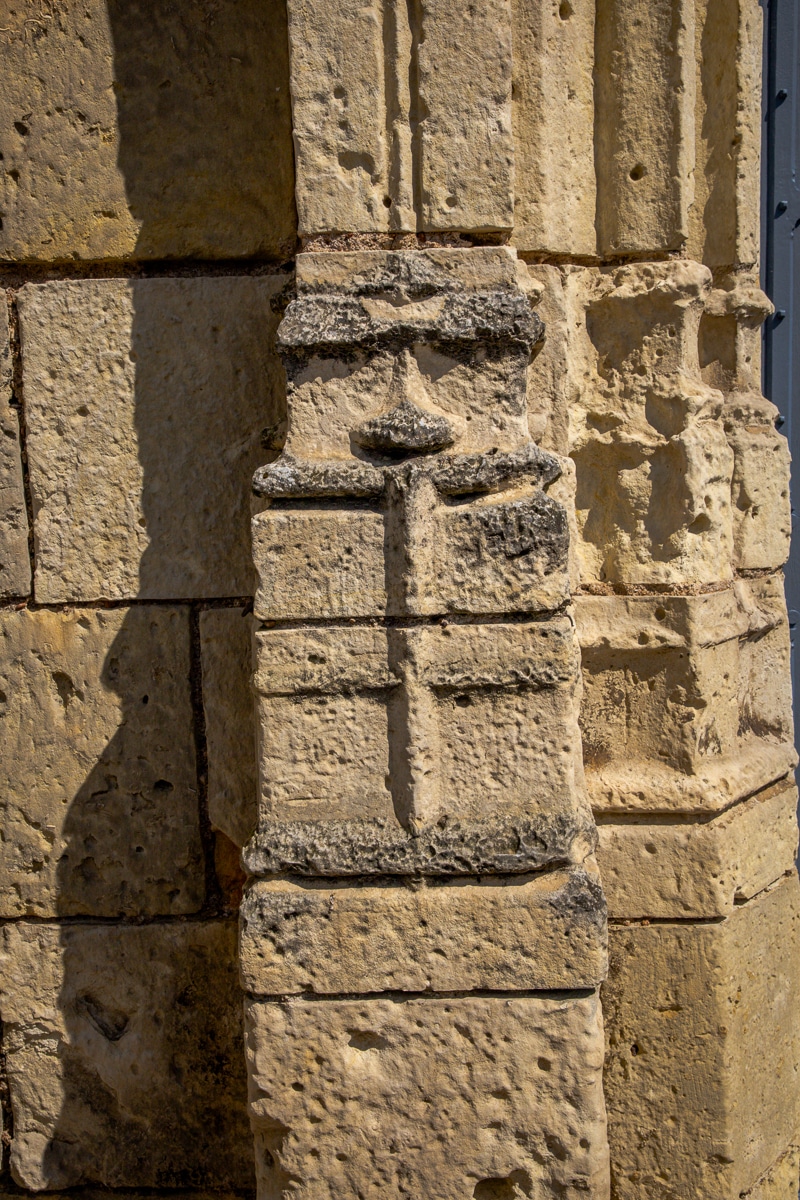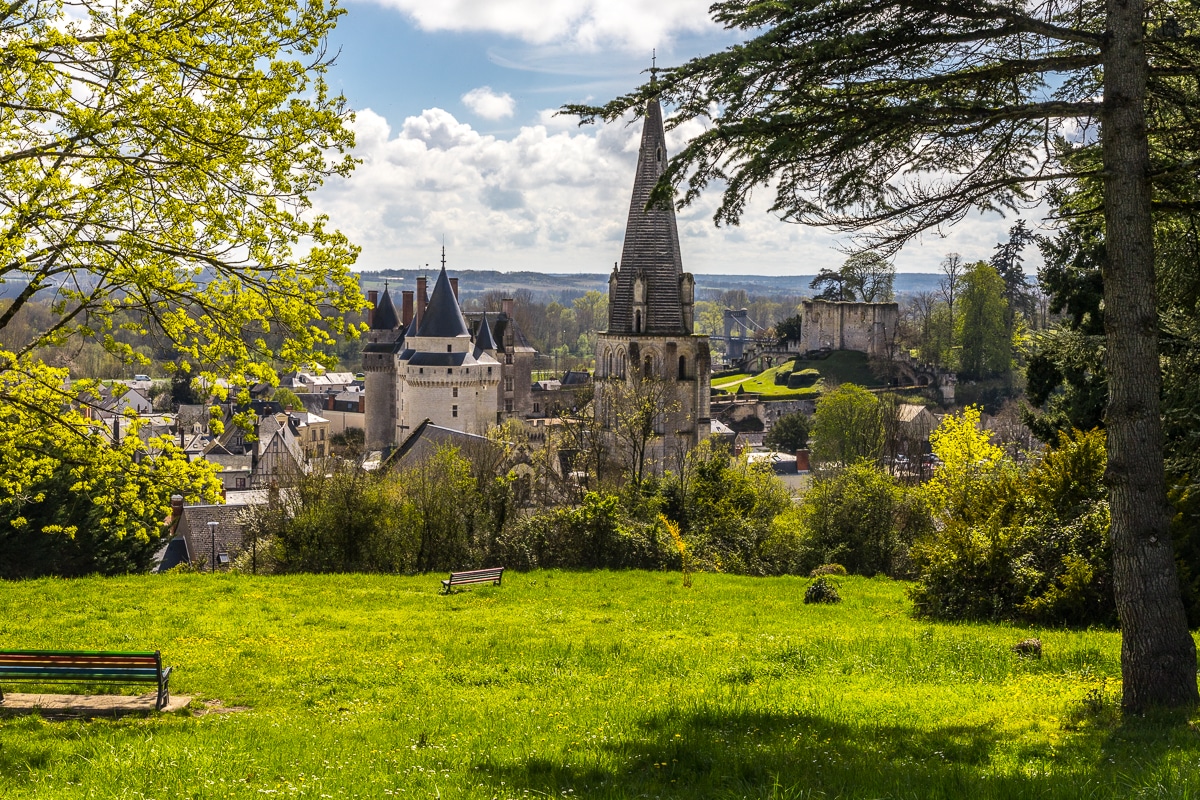 After our visit to Amboise with my brother Mike and his wife Kathy the previous day, our legs and feet told us that we had walked a lot. Still, there was so much more to see. Langeais is a picturesque little Loire village that has been protected/dominated since 994 by whoever was in power. Little remains of that original keep built by Fulk Nerra, Count of Anjou, but the strategic location along the Loire was very desirable property. Over the next decades, the castle changed hands several times, and in 1038 Fulk recaptured it. Later it was destroyed during the Hundred Years’ War, then rebuilt in the 15th Century into the Château de Langeais we see today, one of the best-known examples of late medieval architecture, including a moat and drawbridge, lavish defenses, and turrets.
After our visit to Amboise with my brother Mike and his wife Kathy the previous day, our legs and feet told us that we had walked a lot. Still, there was so much more to see. Langeais is a picturesque little Loire village that has been protected/dominated since 994 by whoever was in power. Little remains of that original keep built by Fulk Nerra, Count of Anjou, but the strategic location along the Loire was very desirable property. Over the next decades, the castle changed hands several times, and in 1038 Fulk recaptured it. Later it was destroyed during the Hundred Years’ War, then rebuilt in the 15th Century into the Château de Langeais we see today, one of the best-known examples of late medieval architecture, including a moat and drawbridge, lavish defenses, and turrets.
 For several reasons, the four of us had decided to forego visiting the Château itself, but the views as we wandered the charming village were impressive nonetheless. We had walked quite a bit before we realized we were getting hungry and decided to find a spot to picnic with the sandwiches we had picked up in Tours before departing.
For several reasons, the four of us had decided to forego visiting the Château itself, but the views as we wandered the charming village were impressive nonetheless. We had walked quite a bit before we realized we were getting hungry and decided to find a spot to picnic with the sandwiches we had picked up in Tours before departing.
The day was quite chilly as we found a bench in the sun in front of Église Saint-Jean-Baptiste. Consecrated by Saint Martin in the ninth century, no trace of the original church has survived. Then in the tenth century, while building his castle, Fulk Nerra ordered the construction of a church on the site dedicated to Saint John the Baptist.
A basilica was built, but the major construction took place in the 11th century with the addition of a bell tower and porch, nave, and choir. The bell tower was raised a century later.
 In the 15th century, a chapel was added, a sacristy was built, and around 1450 the spire of the bell tower was redone. The vaults of the porch were redone, and the openings of the nave were taken over in the 16th century. Then in 1869, the construction of a transept “devoid of any interest” removed part of the nave, in a restoration deemed “disastrous”.
In the 15th century, a chapel was added, a sacristy was built, and around 1450 the spire of the bell tower was redone. The vaults of the porch were redone, and the openings of the nave were taken over in the 16th century. Then in 1869, the construction of a transept “devoid of any interest” removed part of the nave, in a restoration deemed “disastrous”.
Despite being a mélange of styles cobbled together over the centuries, the venerable old church has survived all that has been done to it and has outlasted those who committed the architectural indignities.
The sun was warm, the sandwiches delicious, and the four of us quietly sat in this space that has seen residents, travelers, and conquerors come and go for hundreds of years.
 After our lunch and wandering again, we all climbed the 100+ stairs to a viewpoint above the village with decent views of the town, the Château, and the church. It was then our legs reminded us of the previous day’s workout. At least going down the stairs was a little easier than up.
After our lunch and wandering again, we all climbed the 100+ stairs to a viewpoint above the village with decent views of the town, the Château, and the church. It was then our legs reminded us of the previous day’s workout. At least going down the stairs was a little easier than up.
 In need of coffee, we made our way to a café where we all enjoyed an energizing cup and a comfort stop. Afterwards, we decided to wander off and let Mike and Kathy do their own thing as we only had an hour or so before we needed to be at the train station for the return. We all had good experiences, though different, and returned to Tours tired but satisfied.
In need of coffee, we made our way to a café where we all enjoyed an energizing cup and a comfort stop. Afterwards, we decided to wander off and let Mike and Kathy do their own thing as we only had an hour or so before we needed to be at the train station for the return. We all had good experiences, though different, and returned to Tours tired but satisfied.
=============
 During the Second World War, thousands of Jewish, Roma, homosexual, and other “undesirable” men, women, and children were deported from France to concentration and extermination camps by the Nazis. Many died on the way or were shot during failed escape attempts. Few managed to escape from these convoys which were to take them to slavery or death.
During the Second World War, thousands of Jewish, Roma, homosexual, and other “undesirable” men, women, and children were deported from France to concentration and extermination camps by the Nazis. Many died on the way or were shot during failed escape attempts. Few managed to escape from these convoys which were to take them to slavery or death.
At the end of July 1944, the Allied Forces broke through the enemy defenses across Brittany and the Loire. The Nazis hurriedly crammed detainees into trains in Rennes and formed two rail convoys for the deportation of more than 1,500 prisoners including American, British, and French prisoners captured in Normandy. Along the way railway men would stall the train’s departures and Red Cross volunteers would approach the train to supply water and food.
The two convoys were merged and comprised of 80 rail cars/wagons with 115-120 persons per car. Each car was originally designed to hold 40 men and 8 horses. Because of the sabotage of an important bridge, it was impossible to go further East than Langeais. Then, on August 6, 1944, the train, disguised with camouflage suggesting a military convoy, was strafed by Allied P-38 Lightning fighters, followed by resistance fighters who assaulted the train. There were 70 wounded and 19 killed during this operation that took place over two days, yet the attack allowed the escape of several hundred prisoners, one of the largest escapes of the war. However, the convoy, carrying those that did not escape towards Tours, and then to the concentration camps, from which many would not return.
An example of one of the cars is displayed as a National Monument at the Gare de Langeais.

Linda
25 Apr 2023Looks like a most interesting place with lots of history. Thanks again for sharing your pictures.
Kathy Fooshee
24 Apr 2023Man, I remember it was a beautiful day and the scenery was breathtaking. Thanks for capturing the essence of Langeais through your lens!
Missy Ortega
23 Apr 2023Wow! Thank you so very much for sharing your travels with us. Enjoyed reading about the history behind this. Photos are very impressive.